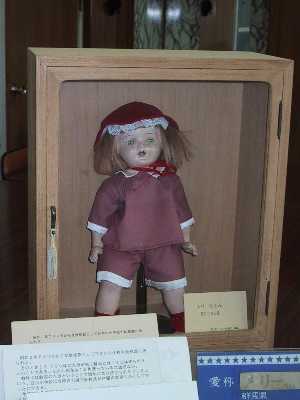
In the 1920s,a movement arose in America to halt Japanese immigration in order to keep out Japanese people who worked hard even for low wages. Relation between Japan and America were very tense. American missionary Sidney Gulick, who was concerned about this worsening in Japan-US relations, considered how to develop closer relations with Japanese people. He coordinated the sending of 12,739 "Friendship Dolls" to Japan, which were purchased with funds collected through donations. These dolls were given to elementary schools and kindergartens throughout Japan, and grand welcoming ceremonies were held for them. Record indicate that a ceremony was held at Niragawa Elementary School on May 5, 1927. The children were very happy with this doll who closed her eyes when laid down and who cried out "Mama." Moreover, Japanese dolls were given to America as "Torei Ningyo" (Dolls of Gratitude), and they were welcomed in America with great enthusiasm.
However, contrary to the hopes of peace and friendship embodied by these dolls, war started between Japan and the United States on December 8, 1941. Afterward in Japan, with the slogan of "American and British devils," a situation arose where it was not permitted to have and to use things that reminded a person of America. Even the Blue-eyed Dolls could not prevail against this current, and they were burned and destroyed at many elementary schools. However, Niragawa Elementary School's Mary was able to remain safe and sound without being destroyed.
As of 1993, the existence of 286 Blue-eyed Dolls throughout Japan have been confirmed. This is equivalent to a 2.2% survival rate. Gunma Prefecture has 19 dolls remaining, which represents a survival rate of 13.3% based on the 142 dolls that were given in 1927. Gunma Prefecture has the highest survival rate of any prefecture in Japan. Also, Niragawa Elementary School is the only school in the city of Ota that has a surviving Blue-eyed Doll.
This is an English translation of a Japanese
web page (link on longer available).
Large photo of Mary
Return
to American Blue-eyed Dolls - Individual Dolls